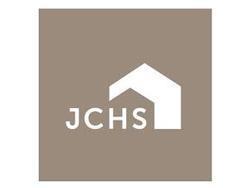Rental Market Booming & Changing, According to New JCHS Report
Cambridge, MA, December 9, 2015—Multifamily housing construction has accelerated to its fastest pace in nearly 30 years but has still not been sufficient to meet surging demand, says Harvard’s Joint Center for Housing Studies in its Biennial Rental Housing Report.
Rental vacancy rates are now at their lowest point since 1985 and inflation-adjusted rents are rising 3.5% annually. With renter incomes stagnant, last year was another record-setting year in the number of renters paying more than 30% of their income on housing costs. While lower-income households are most likely to experience these cost burdens, the report finds that rental cost burdens increasingly afflict even moderate-income renters earning as much as $45,000 per year.
The report, America’s Rental Housing: Expanding Options for Diverse and Growing Demand, finds that 43 million families and individuals live in rental housing, an increase of nearly 9 million households since 2005—the largest gain in any ten-year period on record. And the share of all U.S. households that rent rose from 31% to 37%, the highest level since the mid-1960s. While the supply of rental housing has increased, primarily through conversion of formerly owner-occupied units and, to a lesser extent, new construction, rental demand has increased even faster. Rising demand has put upward pressure on rents and reduced vacancies; meanwhile, new additions to the rental market have primarily added units with above-median rents.
These trends in rental markets, along with a 9% decline in renters’ incomes since 2001, have pushed the number of cost-burdened renters (paying more than 30% of income for housing) up from 14.8 million in 2001 to 21.3 million in 2014. Even worse, the number of these households that are severely burdened (paying more than half their incomes for housing) went from 7.5 million to 11.4 million, also a record. Overall, 49% of renters are cost burdened, 26% severely so. Both of these shares have increased substantially since 2001, when they stood at 41% and 20%, respectively.
Renter households with dependents and relying on a single income are especially likely to face severe cost-burdens, including 38% of single-parent families. Large shares of minorities are also severely burdened, including 33% of blacks, and 30% of Hispanics, compared with 23% of whites. The consequences are far-reaching: in 2014, lower-income households who paid more than half their incomes on rent spent 38% less on food, 55% less on healthcare, and 45% less on retirement savings than those living in affordable housing. The growing affordability crisis among lower-income households is not adequately addressed by rental subsidies, where households who qualify for subsidies far outstrip their availability by a ratio of 4 to 1.
In addition, the report reveals that nearly 51% of renters are over the age of 40, a significant shift from past decades.
